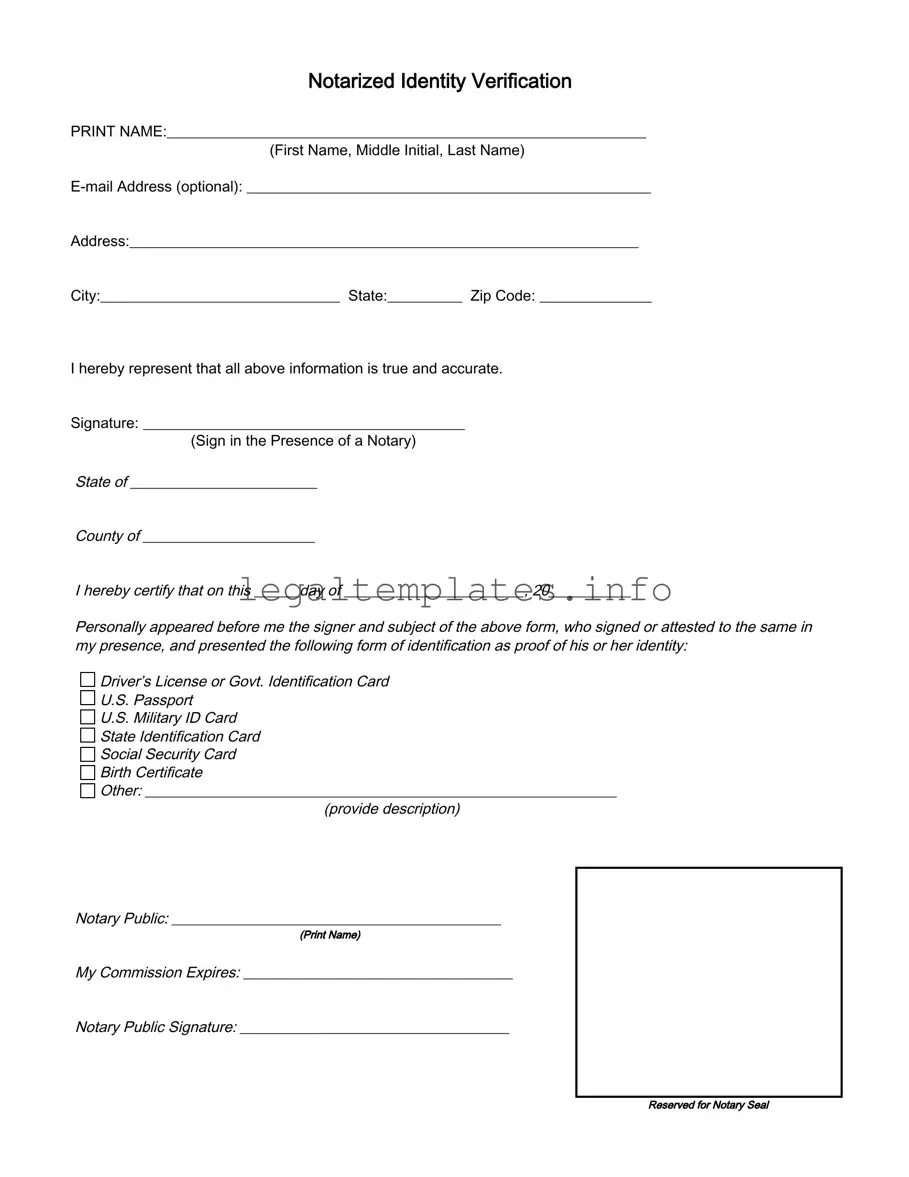What is a Notarized Identity Verification form?
A Notarized Identity Verification form is an official document used to verify a person's identity. It must be signed in the presence of a notary public. The person signing the form (the signatory) declares that the information provided, such as name, address, and identification details, is true and accurate. The form includes a space for the notary to certify the verification, list the type of identification provided by the signatory, and affix their official seal.
Why do I need to get my identity notarized?
Getting your identity notarized adds a layer of authenticity and legal validation to your identity verification. This process is often required for legal transactions, government applications, financial dealings, and whenever a high level of identity verification is needed to prevent fraud. It assures involved parties that the identity has been thoroughly verified by an impartial third party.
What forms of identification can I use for a Notarized Identity Verification?
You can use various forms of identification for a Notarized Identity Verification, including a Driver’s License, Government Identification Card, U.S. Passport, U.S. Military ID Card, State Identification Card, Social Security Card, Birth Certificate, or other acceptable forms of ID as specified by the notary. The key requirement is that the identification must be government-issued and contain a photo of you, ideally with your full name and date of birth.
How do I prepare for signing a Notarized Identity Verification form?
Before signing a Notarized Identity Verification form, ensure that all the information you plan to provide on the form, like your name, address, and email (if optional), is current and accurate. Gather any required identification documents mentioned in the form instruction. Finally, arrange an appointment with a notary public, and remember not to sign the document until you are in the presence of the notary.
Can I sign the Notarized Identity Verification form before meeting with the notary?
No, you should not sign the Notarized Identity Verification form before meeting with the notary. The form requires that you sign or attest to your information in the presence of the notary. This allows the notary to verify your identity using your identification documents and to witness your signature, ensuring that the process meets legal standards.
What happens after my identity is verified and the form is notarized?
After your identity is verified and the form is notarized, the notary will affix their seal to the document, officially notarizing it. You can then use the document for its intended purpose, whether it's for legal, financial, or other formal transactions. Keep a copy of the notarized form for your records, as it serves as legal proof of your identity verification by a notary public.
How long is a Notarized Identity Verification form valid?
The validity of a Notarized Identity Verification form may depend on the specific requirements of the organization or entity requesting it. Some may require a notarization that's been done within a certain timeframe (e.g., within the last six months), while others may have different criteria. It's important to check with the requesting party for their specific requirements regarding the form's validity.



 Driver’s License or Govt. Identification Card
Driver’s License or Govt. Identification Card
 U.S. Passport
U.S. Passport
 U.S. Military ID Card
U.S. Military ID Card
 State Identification Card
State Identification Card
 Social Security Card
Social Security Card
 Birth Certificate
Birth Certificate
 Other: _______________________________________________________________
Other: _______________________________________________________________